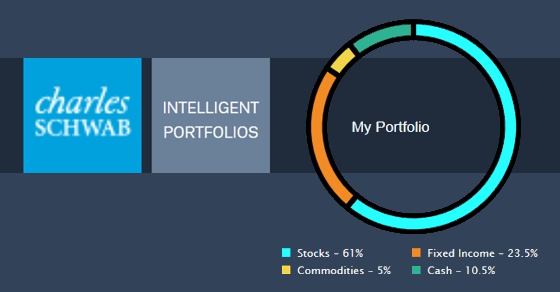
For years, service industries have been moving toward increased automation and technology. Doctors’ charts are replaced with online records. Touchscreens and online ordering replace cashiers. Even police officers are replaced by red light cameras.
Some automation is successful. Other automation (like robo-calls) is arguably unsuccessful.
The financial services industry has also become automated. Client folders used to be kept in a filing cabinet. Trade blotters used to be handwritten ledgers. Rebalancing a portfolio used to require scratch paper and a calculator. That has all been replaced in our practice.
The American brokerage and banking company Charles Schwab recently has released Schwab Intelligent Portfolios (SIPs), “an automated investment advisory service.” Advertising claims it “makes professional advisory services available to anyone with $5,000 to invest.”
Schwab describes “an advanced algorithm” that can build “a diversified portfolio composed of low-cost exchange-traded funds.” They tout its complexity, saying they offer tax-loss harvesting, “a complicated and time-consuming strategy.”
It is a great marketing campaign, and the service is a wonderful idea. We support making investing accessible to the average consumer. That is why we freely offer our wisdom on our blog, Marotta on Money. We believe in empowering people.
Despite its name, SIPs isn’t actually that intelligent. It offers one service: to “build, monitor and rebalance your portfolio,” and it doesn’t do that well.
Building your portfolio begins on their website. You are asked these six questions:
- I’m saving in this account because of [retirement | expenses | emergency fund | standard of living]
- I have [no | extensive] understanding of stocks, bonds and ETFs.
- When I hear “risk” related to my finances, I [worry | see opportunity].
- Have you ever lost 20% or more of your investments in one year?
- If I ever were to lose 20% or more of my investments in one year I would [sell everything | buy more].
- When it comes to making important financial decisions I [avoid them | make them].
The answers to these questions dictate your recommended asset allocation. Any expression of doubt, insecurity or lack of investment knowledge reduces your stock percentage.
An additional question asks you to fill in how much fluctuation you are “confident” your investment will encounter over the next year. If you narrow the range of fluctuation, you get more fixed income. If you widen the range beyond an 8% fluctuation, you get more stocks.
And finally, they ask you when and for how long you need the money. If you say less than 10 years and/or you will use the money for less than 5 years, they modify their suggested portfolio to include more fixed income.
From these questions, they build your asset allocation, but this questionnaire is a mere risk tolerance assessment. Schwab even admits this in their own marketing , explaining that there are five questions about “risk capacity,” five about “risk willingness” and four about “product preferences.” On top of that, they call your asset allocation a “selected risk profile.”
Risk tolerance questionnaires are popular in the financial services industry, but they are ultimately useless. Your goals matter while your risk tolerance must be overcome.
We are programmed with what psychologists call “loss aversion.” We strongly prefer avoiding losses even over seeking potential greater gains. But that doesn’t mean we can afford to reject the gain in favor of less risk. Based on your goals, there are right and wrong answers when defining your asset allocation. Only when you are ahead of schedule can your personal risk aversion be allowed to dampen the return.
Imagine being handed a “treatment tolerance questionnaire” at the doctor’s office. You are asked to respond to questions like “When I hear ‘side effect’ related to my treatment, I [worry | see opportunity]” or “If I ever were to be asked to take 10 or more medicines in one day, I would [seek a different treatment | ask for more medication].”
We know intuitively that such a questionnaire would be useless. Everyone hates side effects, and no one likes taking medication. There is a right answer to how much treatment you need. If that 10th pill was just what was required to save your life, you should take it. It doesn’t matter if you don’t have enough treatment tolerance to enjoy it.
While most average investors have to overcome their fear, a few have to overcome their greed. Usually an asset allocation that includes sufficient bonds to satisfy the next five to seven years of withdrawals provides a better chance of meeting your goals than one that contains all stocks. Depending on your goals, there is a right answer for how much risk to take in your portfolio.
Schwab calls their risk assessment “an advanced algorithm.” But there is nothing advanced about it. They ask how much investment in stocks you can tolerate, and then they give you that percentage.
They are not providing the wisest retirement advice but merely giving you what you asked for. We had hoped that Schwab Intelligent Portfolios would have more to offer.
Screen captures from Schwab Intelligent Portfolios.